Kingdom Fungi | Division Basidiomycota Scientific name Hericium Rank Genus | |
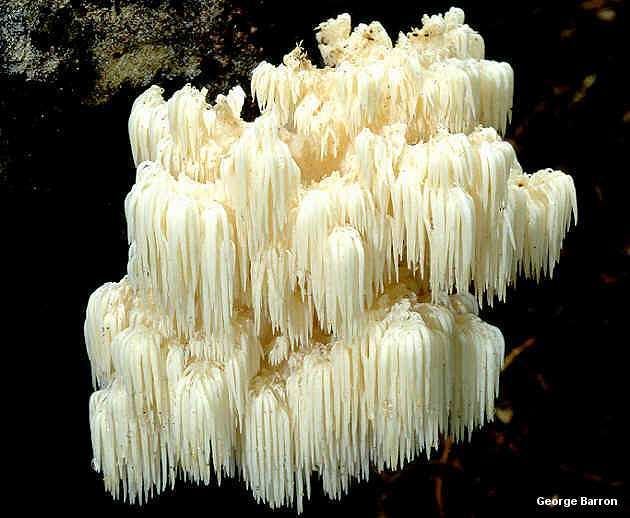 | ||
Lower classifications Lion's mane, Hericium coralloides, Hericium ramosum, Hericium abietis | ||
Hericium is a genus of edible mushrooms in the Hericiaceae family. Species in this genus are white and fleshy and grow on dead or dying wood; fruiting bodies resemble a mass of fragile icicle-like spines that are suspended from either a branched supporting framework or from a tough, unbranched cushion of tissue. This distinctive structure has earned Hericium species a variety of common names—monkey's head, lion's mane, and bear's head are examples. Taxonomically, this genus was previously placed within the order Aphyllophorales, but recent molecular studies now place it in the Russulales.
Contents
- Hericium fungus hericium close up
- History
- Phylogenetics
- Description
- Distribution and habitat
- Uses
- Species
- References
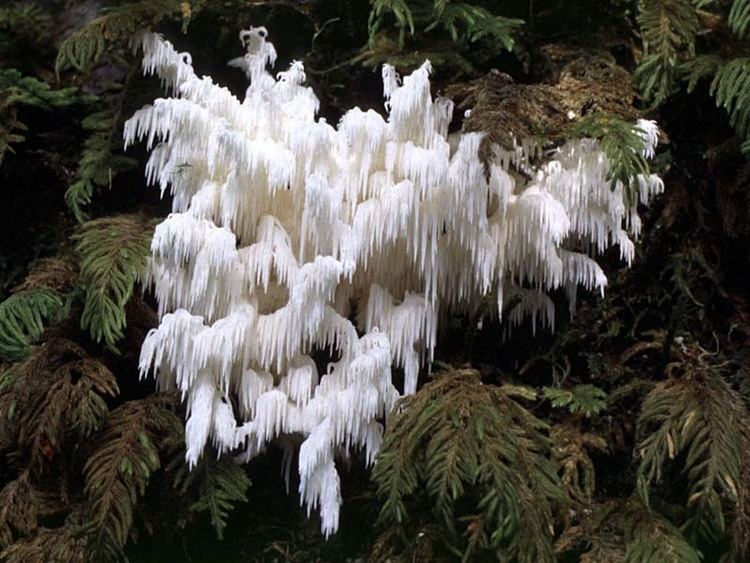
Hericium fungus hericium close up
History
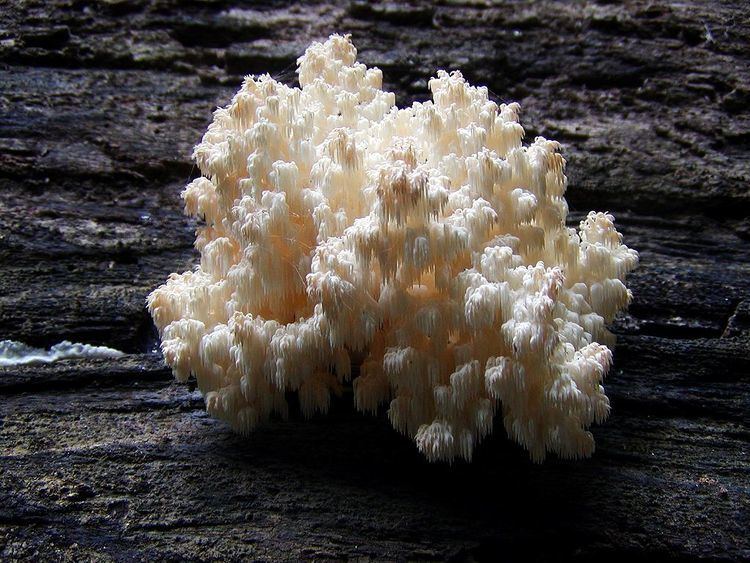
The genus Hericium was originally described by Christian Hendrik Persoon in 1794. It was mentioned by Elias Magnus Fries in the Systema Mycologicum (1822); Fries considered it to be synonymous with the tribe Merisma of the genus Hydnum. In 1825 he recognized Hericium as a distinct genus, although not in the same sense as the genus would be known later.
Phylogenetics
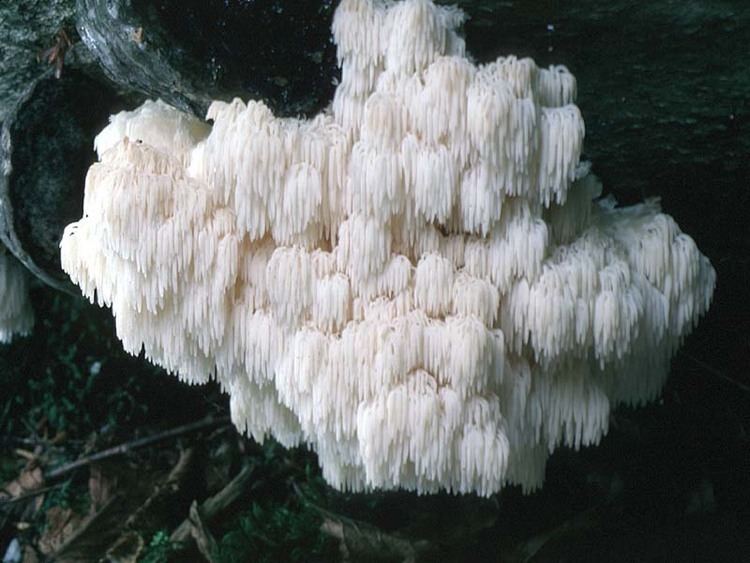
In 2004, the phylogenetic relationships of Hericium species were analysed by comparing the rDNA internal transcribed spacer sequences of H. abietis, H. alpestre, H. americanum, H. coralloides, H. erinaceum, H. erinaceus and H. laciniatum. This analysis separated H. erinaceum from the six other Hericium species, and showed that H. erinaceus, H. abietis, H. americanum, and H. coralloides are closely related each to other but genetically diverged from H. alpestre and H. laciniatum. Molecular genetic markers have been developed that allow for quick and sensitive identification of Hericium species using the polymerase chain reaction.
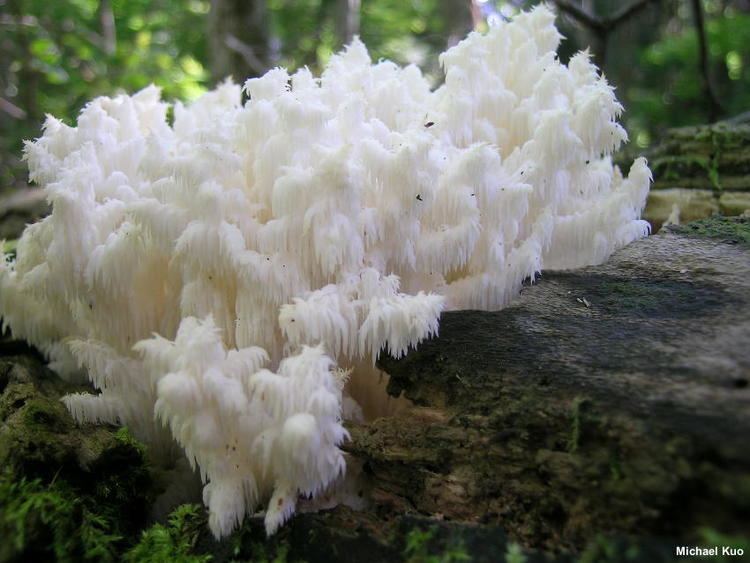
The Hericiaceae family, to which Hericium belongs, belongs to the russuloid clade of basidiomycetes, making it phylogenetically related to the Auriscalpiaceae, the Bondarzewiaceae, and the Echinodontiaceae.
Description
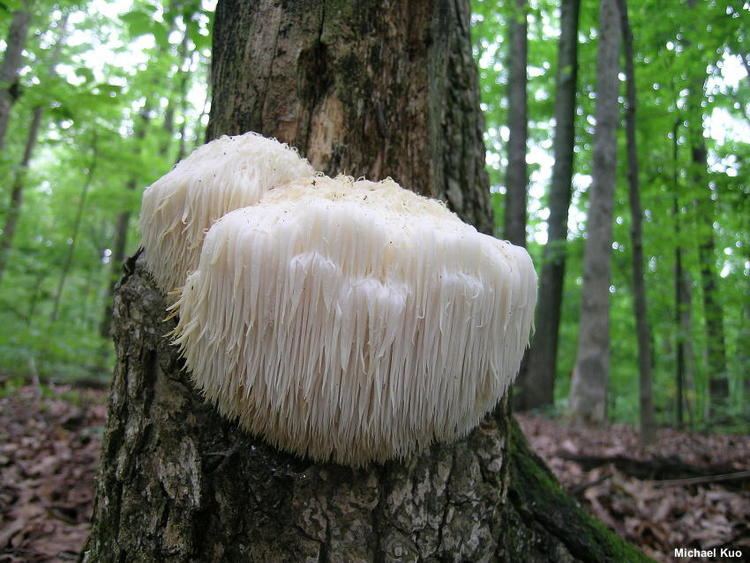
The fruit bodies typically have short stalks and are attached laterally to the host tree. Mature specimens are easily identified by drooping spines which hang down; the spines may be arranged in clusters or more usually, in rows. Positive identification of immature specimens can be more difficult as they often begin as a single clump, developing their branches as they age. They have no caps and contain spiny amyloid spores and numerous gloeopleurous hyphae filled with oil droplets. The spores are spherical to ellipsoid, smooth or covered with very fine warts.
Distribution and habitat
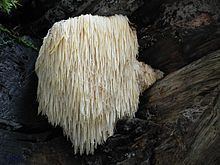
Hericium species are found in many countries around the world and may grow high up on dead tree trunks.
Uses
All four species found in North America are edible and are among the safest and most unmistakable mushrooms. Hericium are also widely consumed in China. This genus is easily cultivated.
In China and Japan, species of Hericium are highly valued for their medicinal properties; in particular, H. erinaceus is used in traditional Chinese medicine. In recent decades there has been considerable research interest in the bioactive properties of this species, and several compounds isolated from H. erinaceus have biological activities, including cytotoxic effects on cancer cells, stimulatory effects on nerve growth factor synthesis, antimicrobial and nematicidal activity, and antitumor activity.
Hericium species can be purchased in dried form for use in cooking and as medicine.
